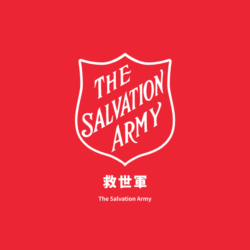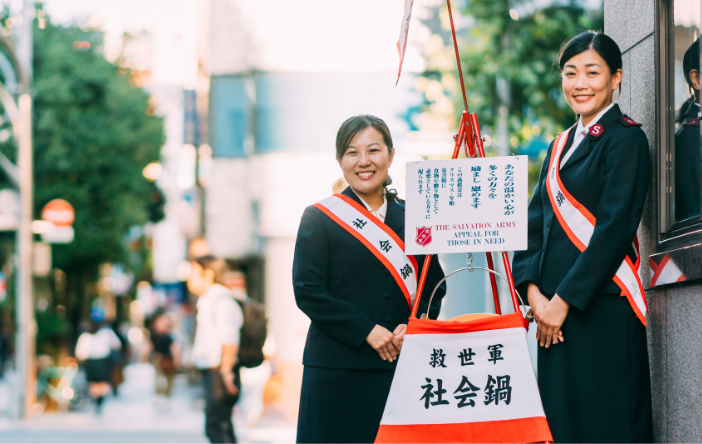2025年の予定
- イベント

The Christmas Kettle is a fundraising campaign by the Salvation Army during Christmas to help those in need. This tradition, symbolized by a pot on a tripod with a red and white tasuki, is a seasonal word for haiku. Held worldwide, it's known as the "Christmas Kettle" for its timing.

Originating in San Francisco after the "Panic of 1893," the Christmas Kettle began when Captain Joseph McFee of the Salvation Army sought to aid unemployed crew members with hot soup.
He placed a black jar at the entrance of downtown, appealing for donations to support the soup kitchen. This unique method quickly gained traction.
By 1895, Salvation Army officers used soup pot donation boxes and rang bells to attract attention, leading to the name "Christmas Kettle" and the bell-ringers being called "Bellingers." By 1897, they provided Christmas dinner to 150,000 needy people.
Introduced in Japan after the Russo-Japanese War, it initially involved distributing New Year’s gifts. Inspired by campaigns in other countries, it evolved to aid the unemployed.
Now known by various names, the donations support rescue activities, disaster relief, and outreach programs for single-parent families, the elderly, hospitals, and more.
Captain McFee's compassion for unemployed sailors and their families was inspired by the Bible:
“When he saw the crowds, he had compassion on them, because they were harassed and helpless, like sheep without a shepherd.”
(Matthew 9:36)
Inspired by the Good Samaritan, McFee's work mirrored God's boundless love, driving him to compassionate action.
The Christmas Kettle is seen as the start of year-end street fundraising in Japan, embodying the essence of people helping each other. The Lord Jesus said:
“But when you give to the needy, do not let your left hand know what your right hand is doing”
(Matthew 6:3)
He also said:
“It is more blessed to give than to receive.”
(Acts 20:35)
The Christmas Kettle embodies these teachings through free-will donations and selfless service, promoting mutual aid.
It symbolizes love, inviting goodwill. As one friend said, "I'll donate to the Christmas Kettle every year."
With everyone's help, the Kettle will be on the streets again, upholding these good intentions. The Lord Jesus will commend those involved:
“You have done well,” with ultimate blessing and joy.
Learn more about the Christmas Kettle here:
Story of Christmas KettleThere are people
that you can save
with your support
With your little compassion, you can help people suffering from poverty and illness, help children to receive education, support disaster victims and more. You can deliver your thoughts to those who need help. Would you like to participate in this donation in the form of support?
Donate Now